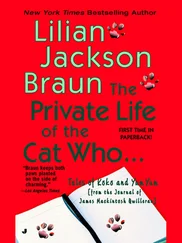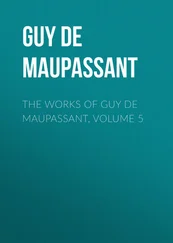True chi circulates around the body via twelve main pathways or meridians. These meridians are mapped onto the surface of the body, so that acupuncture can control the energy flows, although the meridians cannot be identified with any anatomical structures in the body. However, each meridian is also associated with a particular organ and function, and the flow of chi along the meridian actualized that function via the transforming action of chi . As the Chinese put it:
‘The meridians are the paths of the transforming action of chi in the solid and hollow organs’ ( Yijiang jingyi ).
There were several different types of chi associated with different organs and their functions:
‘Thus one is able to smell only if Lung chi penetrates to the nose; one can distinguish the five colours only if Liver chi penetrates to the eyes; one can taste only if Heart chi penetrates to the tongue; one can know whether one likes or dislikes food only if Spleen chi penetrates to the mouth’ ( Zhongyixue gailun ).
The Chinese thought of chi as flowing along the meridians, much as water flows along a riverbed. The meridians and their smaller branches irrigated the whole body, as a river and its canals irrigate the fields of a valley. If a disease arose in the body it affected these rivers of life, so that either no water flowed at all (lack of chi ), or the river was blocked at a particular point, with excessive water and flooding above the block (swelling, and congestion of chi ) and insufficient water below the block (atrophy, lack of chi ). It was thought that the acupuncture needle removed the block, either directly or by increasing the force of the stream. In order to live a long and vital life people were encouraged to nurture their chi . And this was achieved by moderation in all things, avoiding either excess or lack in their diet, exercise, or sex. But also by avoiding external sources of ‘bad’ chi , such as cold, damp, fright, or even, sex with ghosts.
Indian concepts of breath-energy – prana – may have predated and inspired those of Europe and China. Hindus teach that in addition to the physical body, there is an astral body, occupying the same space and connected to the physical body by a thread, severed at death. The vital energy, prana , flows through this astral body within thousands of channels – nadis – connecting seven energy centres or wheels of light, known as the chakras . Health and consciousness can be controlled by regulating the flow of prana , using pranayama (breathing exercises), asanas (yoga postures), and meditation. Normally, most of our prana is carried by the Ida and Pingala nadis , which pass through the left and right nostrils respectively, and carry cooling moon energy or warming sun energy respectively. Yogis claim to control their level of consciousness by minutely regulating their breath and thus the flow of prana , by changing the depth, rhythm, and nostrils used for breathing. In one type of yoga, ‘Kundalini Yoga’, the yogi uses breathing techniques and meditation to mobilize the creative female energy (Kundalini) latent in all – men and women. This energy is symbolized by a sleeping snake coiled around the bottom chakra at the base of the spine. The yogi attempts to create an inner heat that rouses the serpent-power from its sleep, driving it up the central nadi along the spine, piercing each chakra in its path, and absorbing their energy, until finally uniting with the male energy of the crown chakra at the top of the head. Kundalini may be experienced as if a bolt of electric charge were passing up the spine, and, if successful, results in a higher level of consciousness where all illusions are dispelled.
The heart and heartbeat were associated with the soul or spirit in most early cultures, and it is not hard to see why. The heart beats rhythmically and continuously at the body’s centre from birth to death. It speeds up during strong emotions and exertion. It slows down with age and rest. Its stopping is synonymous with death. It is the only internal organ with spontaneous motion, and can be extracted from the body still beating. It is associated with the pulse and the movement of the blood. In Egypt, the heart held the power of life and the source of good and evil. According to the Book of the Dead , the heart of each human was weighed on a scale against a feather after death to determine the balance of good and evil, and thus the fate of the spirit. In many Indian and Chinese languages, the words for heart and mind are more or less synonymous. The Toltecs and Aztecs of ancient Mexico ripped the still-beating heart out of their human sacrifices to offer to their sun god. Most early cultures located consciousness and emotions in the heart (or chest/lungs). Interestingly, the soul ( psyche ), which survived death and produced new life, was often located elsewhere, usually the brain. However, many early cultures did not have such a strongly dualistic concept of the separation of mind and body. Thus it is not always appropriate to talk separately of the mind and body, or of locating the mind in a particular organ of the body.
The Ilongot, a society of headhunters with relatively little contact with the modern world, living in the Philippines, have a word liget which means something like energy and anger. This force arises in the heart, because for them ‘motions of the heart are emotions’ – a belief not far removed from modern, psychological theories of emotion. However, the word liget is also used by the Ilongot in ways that we might regard as metaphorical. For example, chili gives liget to a stew, ginger revitalizes liget in a killer, and winds have more liget when obstructed. Liget is also revealed in people when they pant and sweat, flowing inwardly and generating redness in the self. It is dynamic, organic, chaotic violence, and also the stuff of life.
Early cultures often did not distinguish between the literal (or concrete) and metaphorical (or abstract) use of a concept – the concept of metaphor was only invented by Aristotle in the fourth century BC. So the ancient Greeks used a word such as psyche to refer to both a substance in the body and the behaviour of the soul. The temptation is to say that the ancient Greeks and other early cultures were more literal minded and their thought was less abstract. Yet, most modern discourse also fails to distinguish between literal and metaphorical uses of words. The word ‘energy’ is popularly used to describe everything from the charge supplied by electricity wires, to the intensity of an artistic performance. One manifestation of literal mindedness is the tendency to explain a property of something as due to a discrete substance within the thing (an unfortunate tendency known as ‘reification’). For example, Dr Pangloss, in Molière’s Candide , explained falling asleep as due to a ‘dormative principle’ within the body or mind. Similarly ‘living’, which is essentially a state or way of being, has been explained in terms of substance: life or vis viva (the life-force). Doing things intensely or passionately has been explained in terms of the possession of ‘energy’, the energizing substance swirling around the body or mind. In some cases, thinking of a property or behaviour as a ‘thing’ can be helpful, but more usually scientific or intellectual progress has been made by explaining ‘things’ in terms of processes. Thus most scientists no longer think of life or energy as things to be explained by separate substances, rather they are particular arrangements or processes of matter. However, in popular culture, life and energy still have mixed literal and metaphorical meanings, which partly reflect those of much earlier times.
Читать дальше












